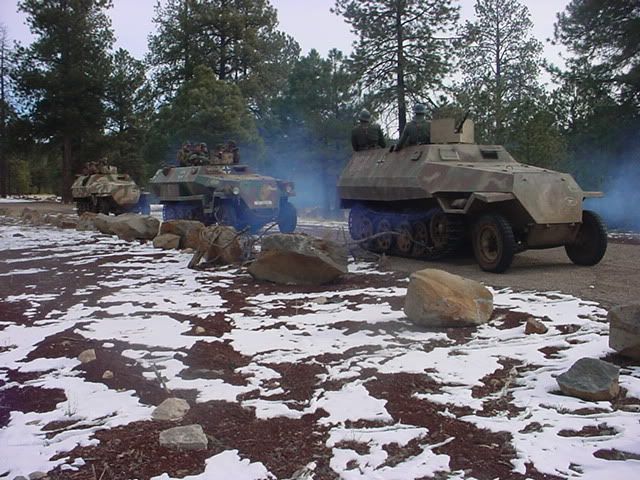Hello all. I want to give a special thanks to elbowsanchez for putting my game pictures out on his server. I have been unable to post these pictures since my web provider went OOB. Anyway, here are the games that I have created:
Axis of Evil
The United States and the European Union are attacked by the new Russian Federation, China, and the International Islamic Alliance in a new global war.
http://66.125.84.108/web1/runeblade/Axis_s.jpg
The Balkans (1999)
The US and NATO invade Serbia to end the ethic cleansing in Kosovo. NATO invades into Kosovo while the US conducts an amphibous landing in Montenegro. Russia joins sides with Serbia.
http://66.125.84.108/web1/runeblade/Balkans_s.jpg
The Cuban Missile Crisis
President Kennedy gives the green light for the invasion of Cuba.
http://66.125.84.108/web1/runeblade/Cuba_s.jpg
Desert Storm
The US and the UN take on Iraq, Russia and China in this global variant.
http://66.125.84.108/web1/runeblade/DesertStorm_s.jpg
Opertion Downfall - 1946
A hypothical battle if the US had to invade mainland Japan in the second part of Operation Downfall in Operation Coronet.
http://66.125.84.108/web1/runeblade/Downfall_s.jpg
Iran War
The US and NATO attack Iran in the near future to end that country’s nuclear ambitions.
http://66.125.84.108/web1/runeblade/Iran_s.jpg
Operation: Iraqi Freedom
Re-fight the war as either the Coalition or Iraqi generals. No politicians, no restrictions. Fight the war to win!
http://66.125.84.108/web1/runeblade/IraqiFreedom_s.jpg
Operation Market Garden
Refight this famous battle to try to turn the tide of history. (Please note that the map is now GRAY and not YELLOW.)
http://66.125.84.108/web1/runeblade/Market_s.jpg
Operation Sealion
My personal favorite! Set up like D-Day, the German 6th, 9th, and 16th armies must push into Britian and capture London.
http://66.125.84.108/web1/runeblade/Sealion_s.jpg
The Second Korean War
The Korean penninsula erupts in conflict again. The game pits the US, South Korea, North Korea, and China in the desperate fight for dominance. The war has the potential to spill over into a Chinese invasion of Taiwan as well as becoming nuclear.
http://66.125.84.108/web1/runeblade/SecondKoreanWar_s.jpg
Vietnam Conflict
Instead of fighting a status quo war in Vietnam, the US president authorizes an invasion of North Vietnam! Fight the war in a whole new level! The US and South Vietnam take on the Viet Cong, North Vietnam, and China.
http://66.125.84.108/web1/runeblade/Vietnam_s.jpg
World War III
The USSR and China blindside NATO and the US in a new global war. Will the Allies be able to fight back?
http://66.125.84.108/web1/runeblade/WWIII_s.jpg
I sell these games if any are interested. You can contact me at runeblademaps@hotmail.com and I will give you price as well as shipping cost.
Enjoy,
Rune Blade








